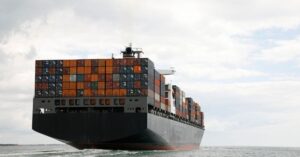The World Trade Organization’s (WTO) Trade Facilitation Agreement (TFA) presents both challenges and opportunities for ASEAN member states. This landmark agreement, designed to expedite the movement, release, and clearance of goods across borders, aspires to reduce trade costs and enhance global trade efficiency (WTO, 2014). As ASEAN seeks to bolster regional economic integration, the successful implementation of the TFA is pivotal. This article delves into the challenges and opportunities that the ASEAN region encounters in the context of the TFA.
A significant challenge for ASEAN countries is the disparity in the levels of development among member states, which affects their capacity to implement the TFA provisions (Anas et al., 2017). Developed countries such as Singapore and Malaysia have advanced customs systems and infrastructure, while less developed members like Myanmar, Laos, and Cambodia lag behind. These disparities call for concerted efforts to bridge the gap and provide technical assistance and capacity-building support for less developed countries (Hollweg & Wong, 2020).
Moreover, aligning national legislation and regulations with the TFA provisions can be a complex process for ASEAN countries. This necessitates thorough legal reviews, inter-agency coordination, and stakeholder consultations (Menon, 2019). Additionally, the harmonization of customs procedures, documentation, and data requirements across the region poses a considerable challenge (Widdowson et al., 2017).
However, the TFA also presents significant opportunities for the ASEAN region. The agreement’s implementation can potentially reduce trade costs by 14.3% on average for member countries (Moïsé & Sorescu, 2013). Lower trade costs can foster increased intra-regional trade, attract foreign direct investment, and enhance regional economic integration. Furthermore, the TFA can contribute to improving the ease of doing business in the region, which is essential for the private sector and small and medium-sized enterprises (SMEs) (Tran, 2018).
ASEAN’s commitment to digitalizing trade processes aligns with the TFA’s emphasis on the use of information and communications technology (ICT) for trade facilitation (WTO, 2014). This provides an opportunity for ASEAN to advance its digital trade agenda, bolstering the region’s competitiveness in the global market (Banomyong et al., 2019).
In conclusion, while the TFA presents challenges to the ASEAN region, particularly in terms of capacity building and the harmonization of customs procedures, it also offers significant opportunities. By successfully implementing the TFA, ASEAN countries can reduce trade costs, enhance regional economic integration, and improve the ease of doing business, ultimately contributing to the region’s economic growth and development.
References:
Anas, T., Banomyong, R., & Beresford, A. (2017). Assessing the Implementation of the Single Window System in ASEAN. Asian Journal of Shipping and Logistics, 33(4), 199-209.
Banomyong, R., Anas, T., & Beresford, A. (2019). Digitalization in ASEAN logistics: Prospects and challenges. In M. G. Zavatta (Ed.), Digital Transformation in Business and Economics (pp. 189-210). Springer.
Hollweg, C. H., & Wong, E. (2020). Trade Facilitation and the Extensive Margin of Exports: Evidence from the WTO’s Trade Facilitation Agreement. World Development, 127, 104755.
Menon, J. (2019). ASEAN’s Readiness for the Trade Facilitation Agreement. Asian Development Bank.
Moïsé, E., & Sorescu, S. (2013). Trade Facilitation Indicators: The Potential Impact of Trade Facilitation on Developing Countries’ Trade. OECD Trade Policy Papers, No. 144. OECD Publishing.











